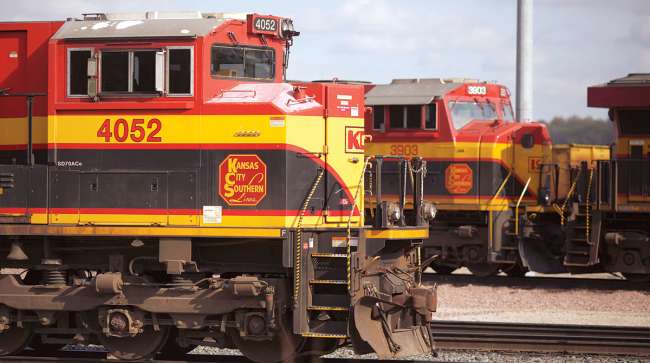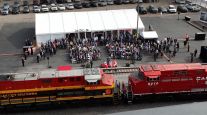Senior Reporter
Kansas City Southern Reports Strong First-Quarter Earnings

Kansas City Southern, the smallest of the Class 1 railroads in North America, on April 17 reported first-quarter financial results that beat Wall Street’s expectations.
Net revenue reached $675 million, a 5% jump from $660 million the same period in 2018. First-quarter net income was $103 million, or $1.02 a share, compared with $145 million, or $1.40 per share, in the same period of 2018.
However, adjusted diluted earnings per share were $1.54 a share, up 18% from a year ago and above what analysts had forecast. The company said the 52 cents-per-share difference resulted from the exclusion of nonrecurring items resulting from revenue declines in automotive and intermodal shipping caused by auto plant shutdowns and a major service interruption in Mexico.
Zacks Consensus Estimate had forecast an adjusted earnings per share price of $1.45 and revenue of $669 million.

Ottensmeyer
“We are pleased to announce a strong start to the year with solid revenue growth and improved operational performance,” Kansas City Southern CEO Patrick Ottensmeyer said in a statement.
“Although we are still in the early stages of implementation, KCS’ transition to a precision-scheduled network is already producing improved velocity and dwell, which is driving improved customer service, labor and asset utilization as well as other efficiencies.”
Of the Class 1 railroads, the Kansas City, Mo.-based railroad is the only one to run a dedicated freight system through an agreement with the Mexican government. The majority of the rail system spans from the Valley of Mexico to the U.S. border at Laredo, Texas. There also are tracks connecting to the port cities of Lázaro Cárdenas and Veracruz, giving the railroad access to the Gulf of Mexico and the Pacific Ocean to the U.S. border.
When broken down by sectors, revenue in the chemical and petroleum division was up 21% when compared with 2018’s first quarter. The industrial and consumer productions sector saw a 2% jump. Agriculture and minerals improved 8% when measured against 2018. Energy also increased 5%, However, intermodal and automotive fell 12% and 4%, respectively.
The company’s adjusted operating ratio improved to 64.2 compared with 65.8 in the first quarter of 2018. Operating ratio, or operating expenses as a percentage of revenue, is a key industry metric used to measure efficiency. The lower the ratio, the greater the company’s ability to generate a profit.



